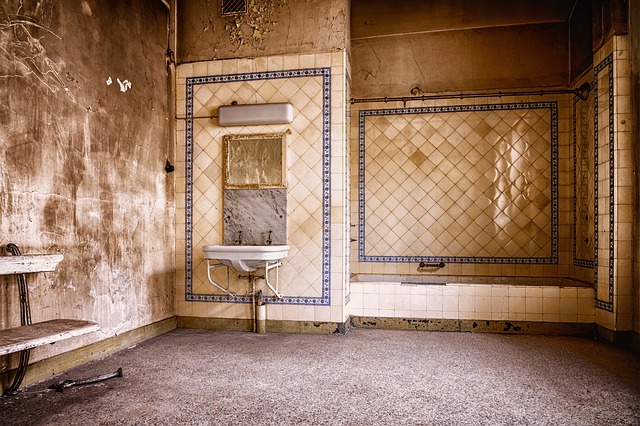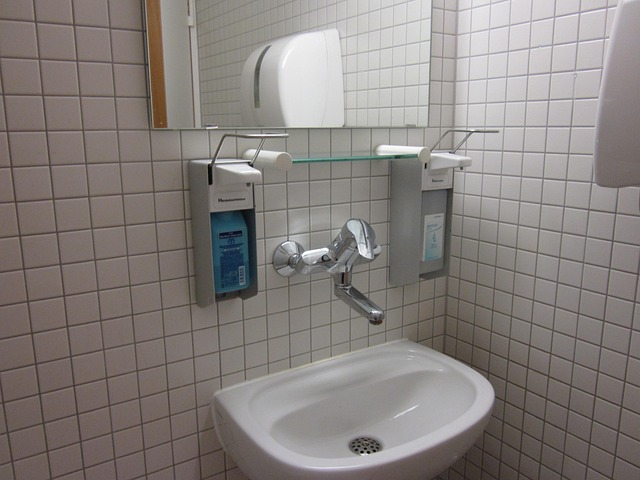Curbless Design: Modernizing Walk-in Showers for Seamless Access and Style

Curbless design is revolutionizing modern walk-in shower renovations by eliminating thresholds, enha…….
The Evolution and Impact of Walk-In Showers in Bathroom Remodeling
Introduction:
The concept of a bathroom remodel is not merely about updating fixtures or improving aesthetics; it’s a reflection of changing lifestyles, needs, and technologies. Among the most significant trends in contemporary bathroom design is the rise of walk-in showers. These modern marvels offer a blend of functionality, safety, and luxury that caters to diverse demographics, from the young and active to the elderly and mobility-impaired. This article delves into the intricacies of walk-in shower remodels, exploring their historical context, global impact, economic considerations, technological advancements, policy and regulatory frameworks, challenges, case studies, and future prospects. Readers will gain a comprehensive understanding of how these features are shaping modern bathroom design and what they mean for homeowners and the construction industry alike.
Understanding Bathroom Remodel for Walk-In Showers:
A walk-in shower is an accessible shower unit that, unlike traditional bathtub/shower combinations, does not require stepping over a tub wall. It typically includes a flat entrance leading to a spacious enclosure with glass doors or walls. The core components of a walk-in shower remodel include the shower tray or base, the glass enclosure, waterproofing systems, fixtures, and finishes. These elements work in harmony to create a functional and stylish bathroom feature.
Historically, bathing facilities have evolved significantly from public baths in ancient civilizations to the private bathrooms of today. The walk-in shower, as we know it, gained popularity in the 20th century, particularly with the advent of modern materials and design philosophies that emphasized open spaces and clean lines. Today, walk-in showers are a hallmark of contemporary bathroom design, reflecting a shift towards accessibility, efficiency, and personal wellness.
Global Impact and Trends:
The influence of walk-in showers is felt globally, with variations in design, size, and technology adapting to regional preferences and building codes. In North America and Europe, these showers are commonplace, often seen as a status symbol of modernity and elegance. In Asia, where space efficiency is paramount, walk-in showers are increasingly favored over traditional bathtubs. Middle Eastern and African markets are also seeing a rise in the adoption of walk-in showers, driven by growing awareness of design trends and the importance of water conservation.
Economic Considerations:
The economic impact of walk-in shower remodels is significant. They represent a substantial portion of the bathroom renovation market, influencing both consumer spending and industry investment in innovation and skilled labor. Market dynamics indicate a shift towards luxury and personalized bathroom spaces, with walk-in showers being a key driver. Investment patterns suggest that homeowners are willing to allocate a larger share of their budget to achieve the desired aesthetic and functional outcomes. In economic terms, “Bathroom remodel for walk-in showers” is not just a niche market but a cornerstone of the renovation and construction sector’s growth.
Technological Advancements:
Technology has played a pivotal role in advancing walk-in shower designs. Innovations such as thermostatic shower valves, water-saving fixtures, touchless controls, and smart home integration are transforming the user experience. Glass technology has evolved to produce stronger, clearer glass that can withstand varying temperatures and pressures, ensuring safety without compromising on design. Additionally, anti-microbial finishes and self-cleaning surfaces have become more prevalent, addressing hygiene and maintenance concerns.
Policy and Regulation:
Policies and regulations are crucial in guiding the development and installation of walk-in showers. Building codes ensure that these fixtures meet safety standards, particularly in terms of waterproofing and slip resistance. Accessibility laws, like the Americans with Disabilities Act (ADA) in the United States, mandate features such as adequate clearance space and grab bars for safety. These regulations not only protect consumers but also drive innovation by setting minimum performance benchmarks.
Challenges and Criticisms:
Despite their popularity, walk-in showers face challenges, including concerns over water conservation and the environmental impact of manufacturing and materials. Critics argue that the trend towards larger showers may undermine efforts to conserve water. Additionally, there are accessibility concerns for individuals with disabilities, which must be addressed through thoughtful design and compliance with regulations. Solutions include the use of low-flow fixtures, sustainable materials, and universal designs that cater to all users.
Case Studies:
Several case studies illustrate the successful implementation of walk-in showers. For instance, a luxury condominium project in Manhattan fully embraced this trend, offering residents spacious, well-designed walk-in showers as a standard feature. In contrast, a rural home renovation focused on creating an age-friendly space with a walk-in shower that included grab bars and a curbless entry for ease of access. These examples demonstrate the versatility and adaptability of walk-in shower designs to diverse needs and preferences.
Future Prospects:
Looking ahead, walk-in showers are poised to continue their evolution. Technological advancements will likely focus on energy efficiency, smart home integration, and materials that are both eco-friendly and durable. Design trends will lean towards more personalized and adaptable spaces that cater to the changing needs of households. As demographic shifts occur, with an aging population and a greater emphasis on wellness and self-care, walk-in showers will remain a key feature in bathroom design and renovation projects.
In conclusion, walk-in shower remodels are a testament to the intersection of design, technology, and regulatory compliance. They represent a significant economic opportunity and a response to evolving consumer preferences and societal shifts. As this trend continues to influence the construction and renovation industry, it is essential to consider both the opportunities and the challenges it presents. With thoughtful design and innovative solutions, walk-in showers will undoubtedly remain a vital aspect of bathroom design for years to come.

Curbless design is revolutionizing modern walk-in shower renovations by eliminating thresholds, enha…….

Incorporating built-in niches and recessed shelves into a modern walk-in shower renovation optimizes…….

LED lighting is transforming spaces, including modern homes and frameless glass shower installations…….

Handheld showerheads are a game-changer for enhancing bathroom experiences, especially combined with…….

Neutral and earthy tones, from soft beiges to muted greys, are a timeless interior design choice tha…….

Frameless glass enclosures are a modern bathroom trend, ideal for walk-in shower remodels. They offe…….

Before designing your dream tiled walk-in shower, ensure accurate measurements and assess functional…….

Creating a wellness retreat at home involves designing a sanctuary for relaxation and self-connectio…….

Curbless design is a rising trend in modern walk-in shower renovations, offering an accessible and s…….

In designing luxurious walk-in showers, proper ventilation is crucial for both function and aestheti…….